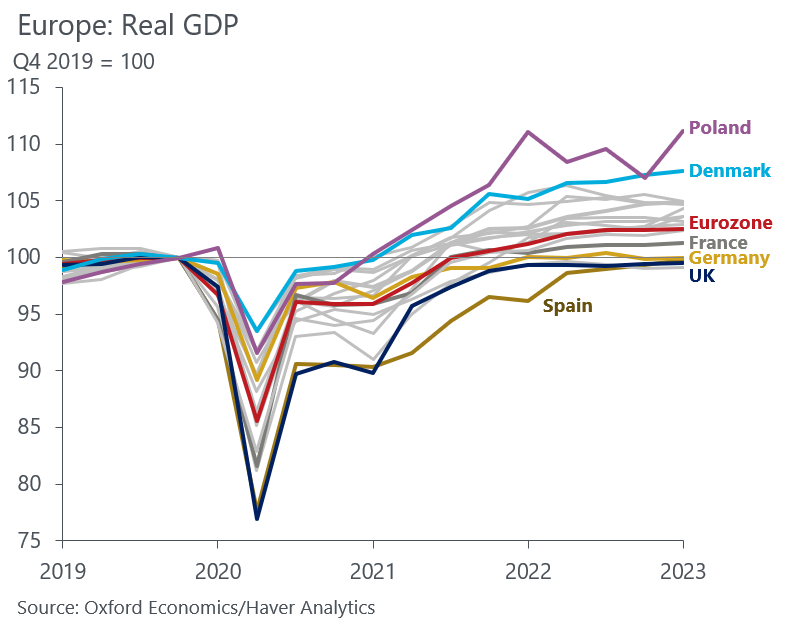Poland’s GDP has grown by 11.2 percent when compared to the pre-Covid fourth quarter of 2019, according to figures published by Statistics Poland (GUS).
The preliminary estimate of Poland’s GDP in the first quarter of 2023 showed a year-over-year decline of 0.2 percent. Despite the dip, economists view the news positively. This is because the market expected a much steeper decline, with the consensus projecting a contraction of 0.8 percent for Poland’s GDP. So, the results have had a positive impact on the economic forecasts for Poland this year.
More significantly, despite the annual decrease in GDP, Poland recorded very solid growth on a quarterly basis (compared to the previous quarter). GDP in the first quarter of 2023 was 3.9 percent higher than in the fourth quarter of 2022 versus estimates of just 0.7 percent growth.
In recent years, Poland had seen higher growth only in two quarters. The first followed a substantial decline at the start of the pandemic, while the second occurred at the beginning of last year, fueled by a mass influx of Ukrainian refugees. In just one month, the Polish population increased by over a million people, leading to an enormous increase in consumption.

Poland’s quarter-over-quarter GDP growth of 3.9 percent (significantly above forecasts) helped avoid a technical recession (a GDP decline for two consecutive quarters). Record-high employment is another sign of Poland’s strong economy. In the first quarter of 2023, Poland reached a historic milestone with over 17 million people in employment.
Poland’s quarterly growth was the best result of any EU country. Portugal came in second place, but its growth was less than half as much, at 1.6 percent quarter-over-quarter. Meanwhile, five countries experienced a decline, with two of them seeing a contraction exceeding 2 percent.
Since 2019, the Polish economy has been in good shape and has been leading in GDP growth among EU countries since 2020. Its economic strength stems from robust consumption and growing industry. According to Oxford Economics/Haver Analytics, in comparison to the fourth quarter of 2019, Poland’s GDP has grown by 11.2 percent, which is significantly higher than countries like France with 1.3 percent growth, and Germany and Spain with almost stagnant GDP levels.
The United Kingdom’s GDP is 0.5 percent lower than its pre-Covid level. Poland’s southern neighbors, such as the Czech Republic, are facing a similar situation. Their GDP remains 0.9 percent lower than at the end of 2019, indicating a weaker economy compared to pre-pandemic times. This is due to their heavy dependence on the struggling German automotive industry. In contrast, Poland is moving forward due to stronger diversification and a growing IT sector.





